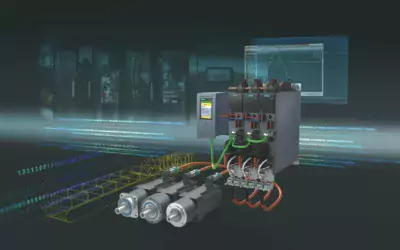As technological innovation continues to push boundaries, one field that has gained significant attention in recent years is nanoscale manufacturing. At these minute scales, components can be produced with unprecedented resolution and complexity, opening up new opportunities across multiple industries.
Nanoscale machining refers to the creation of three-dimensional structures at sizes ranging from tens of nanometers down to just a few atoms wide. Such small dimensions present major challenges when compared to conventional machining methods used at macro or micro scale levels. Firstly, the size of the tool itself becomes relevant as it needs to be much smaller to avoid damaging the material being machined. Secondly, interactions between the tool, workpiece, and environment become more significant, requiring careful consideration of factors such as surface chemistry, friction, and heat generation.
Despite these difficulties, researchers and industry leaders alike recognize the enormous promise presented by nanoscale CNC machining. By creating structures with near atomic-level precision, nanotechnology opens doors to revolutionary innovations in fields like electronics, energy storage, biomedicine, and environmental remediation. For example, nanoscale architectures can offer superior performance characteristics in electronic devices, including improved electrical conductivity, increased bandgap tunability, and enhanced light absorption properties. Similarly, nanostructured catalysts can boost reaction rates significantly over bulk materials, leading to greater efficiency in chemical processing.
To overcome some of the obstacles associated with nanoscale machining, several approaches have been proposed and tested. One promising strategy involves using focused ion beam (FIB) milling techniques to carve out desired shapes in thin films or membranes, followed by deposition of additional layers to build up multi-layered structures. Another approach employs scanning probe lithography, utilizing tips mounted on atomic force microscopes to directly manipulate individual molecules. Still another method relies on laser ablation, utilizing ultrafast lasers to vaporize small regions selectively, leaving behind precisely defined structures.
However, despite the progress achieved thus far, nanoscale CNC machining remains a challenging task, primarily because it requires extremely accurate positioning and motion control systems capable of moving the tool and workpiece simultaneously with nanometric precision. Moreover, given the complexity inherent in dealing with nanoscale forces and phenomena, developing reliable and efficient machinery remains a daunting task. Nonetheless, numerous research groups around the world are actively working on this frontier, exploring innovative ideas that could lead to breakthrough advances in nanomanufacturing technology.
For over a decade, FANUC’s ROBONANO α-0iB five-axis nanoscale milling machine has been utilized in Japan to advance the creation of cutting-edge semiconductor technologies. What sets this machine apart is its exceptional precision at the nanoscale level and diverse range of capabilities.
Unlike traditional milling machines, the ROBONANO offers concurrent five-axis milling and engraving, as well as sophisticated nanoscale measuring functions. This groundbreaking equipment is currently on extended loan to UW Professor Sangkee Min’s laboratory within the Department of Mechanical Engineering and the Grainger Institute for Engineering.
The ROBONANO’s unique features pique Min’s interest since they enable novel investigations into materials science and the emergence of fresh methods of design and fabrication. Min believes that several intriguing attributes of materials manifest themselves differently at the nanoscale, resulting in previously unavailable possibilities.
As an illustration, he refers to synthetic sapphire, an opaque substance produced by melting aluminum oxide under exceptionally elevated temperatures. Synthetic sapphire presents a formidable challenge owing to its fragile composition. Nevertheless, recent tests led by Min during his tenure in Japan indicated that synthetic sapphire displays greater malleability at the nanolevel than anticipated.
With the help of the ROBONANO, Min plans to carry out further examinations and develop innovative procedures related to manufacturing style.
In essence, Min anticipates shifting the focus away from “design for manufacturing” and toward “manufacturing for design,” allowing manufacturers to submit their ideal concepts while producers deliver those concepts into reality. While adopting state-of-the-art technologies necessitates significant financial commitments and longer time horizons compared to older practices, Min expects that the shift would result in faster innovation cycles and more imaginative goods. However, implementing sweeping alterations throughout the sector might prove tougher for small and medium-sized enterprises (SMEs), as adjusting established patterns and supply networks takes considerable resources. Notwithstanding, Min remains optimistic about the transformational impact of nanoscale manufacturing in advancing both products and manufacturing methods alike.
Nanoscale CNC machining holds tremendous promise in revolutionizing many different fields by offering superior functionalities through advanced nanostructure designs.
Though challenges remain in terms of achieving industrial-scale production capacities, significant strides have already been made towards unlocking the full potential of nanoscale manufacturing.
Given continued investment and development efforts, the future looks bright indeed for this burgeoning area of innovation.
![ROBONANO_1_bhhzdm[1]](https://cncmachinetoolrepair.co.uk/wp-content/uploads/2023/10/ROBONANO_1_bhhzdm1-jpg.webp)
Fanuc’s ROBONANO Specs


